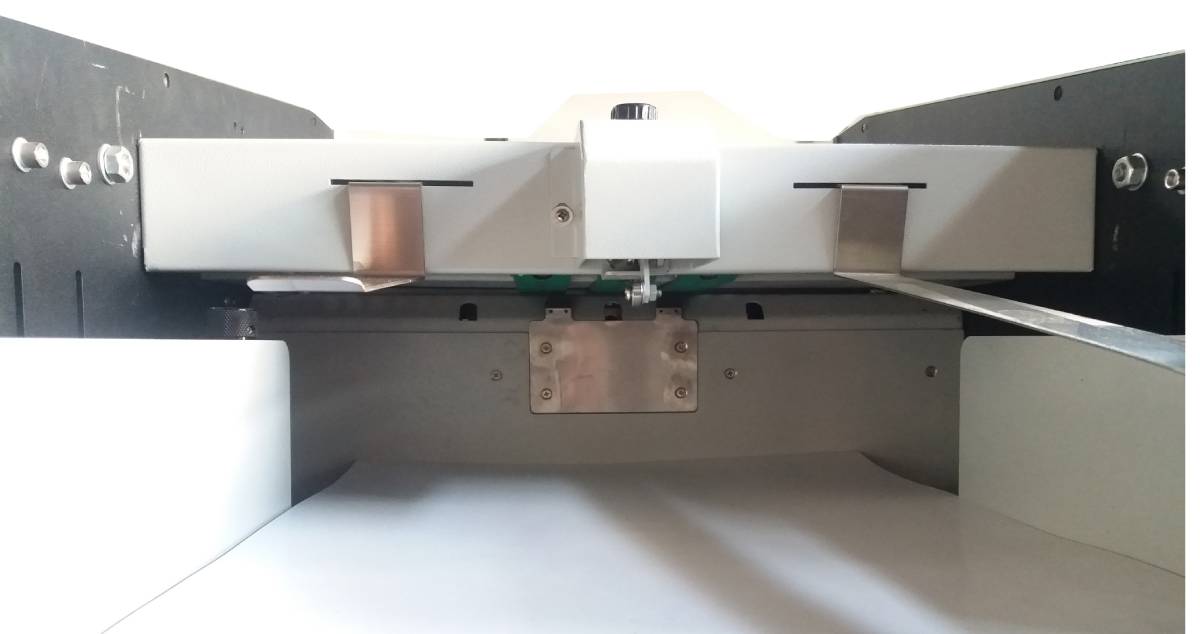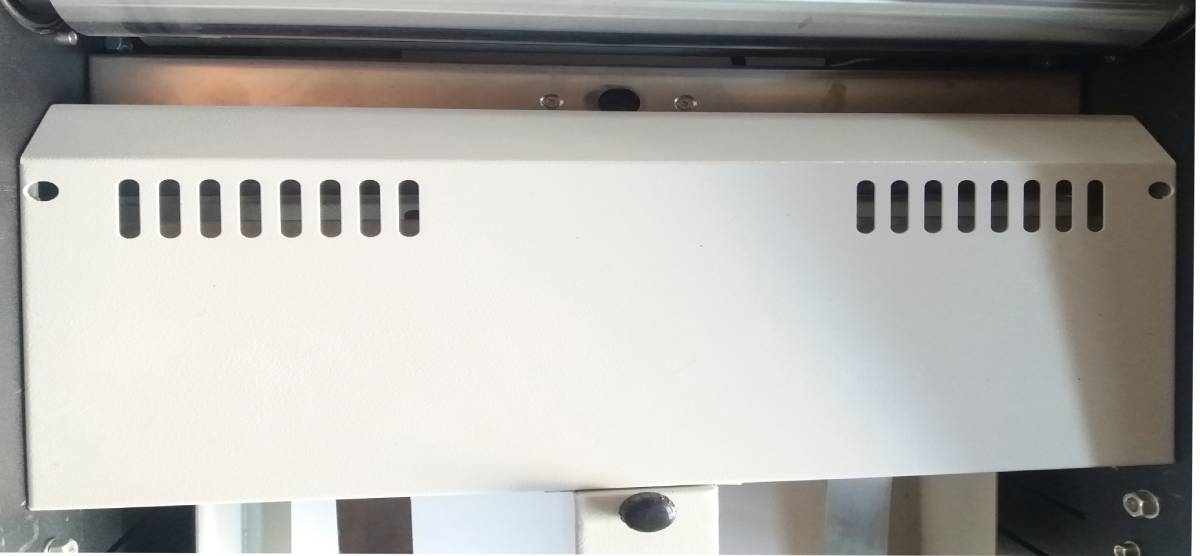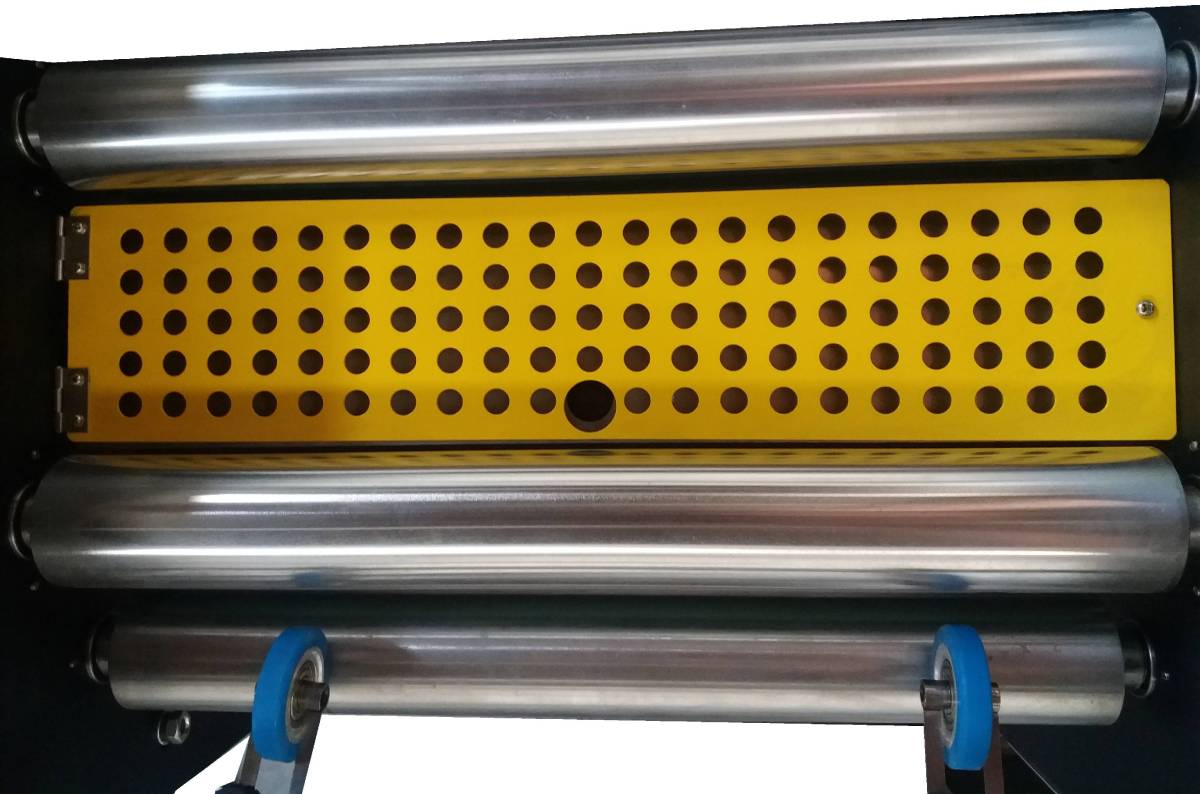laminating machine——SMFM-390G/520G
What are the characteristics of the fully laminating machine?
1. Using digital display automatic control technology, it is easy to operate and has a high degree of automation.
2. Using vacuum technology with two air passages, the air performance is stable, and the workpiece yield is high.
3. The worktable adopts a frame-type steel frame structure, effectively improving the vacuum degree and is durable. The exchange-type workbench can carry out multiple veneers in one box so that one machine can be used for various purposes.
4. The unique far-infrared constant temperature heating system is adopted to save energy, time and electricity. The heating is uniform, thereby reducing the product's deformation, wrinkling, degumming and other phenomena.
5. The critical components of the electronic control system are configured with high-temperature resistance and high insulating materials, and the operation is safe and reliable.
What is the machine parameter of the machine?
It's a digital, fully automatic laminating machine. We have two types of this model. They are SMFM390G and SMFM520G. The different numbers represent different widths of their size. As you know, the width depends the max paper size. Thus, the max paper size is also different. On the other hand, the other parameters are all the same as each other. Their operating speed is 0-10m/min, and their laminating temperature is 80~125℃. Furthermore, the total power is all 3kw. Besides, the pressure is 0.1~0.5MPa. At last, the maximum height of the paper is 8cm. The max paper size is respectively 350mm and 480mm. And the dimensions(L×W×H) are 1.88×0.67×1.4m and 1.88×0.8×1.4m.

What is the advantage of the fully automatic laminating machine?
1. Fully automatic laminating machine can reduce the cost for enterprises
The automatic film laminating machine's ability to reduce enterprises' costs is mainly reflected in large-scale production. One robot can replace 3 to 5 workers, depending on the enterprise's specific situation. The automatic laminating machine will not get tired. As long as it is properly maintained, it can continuously produce 24 hours a day. In addition, with high-speed laminating machine technology, automatic lamination will significantly reduce costs.
2. the automatic laminating machine can improve product quality.
During the attachment process of the automatic laminating machine, once the attaching parameters and motion trajectory are given, the automatic laminating engine will accurately repeat this action. An automatic laminating machine can reduce product costs, improve product logo aesthetics, and enhance product competition. Force. With the improvement of efficiency and product quality, customers do not need to be criticized due to high defective products, and work pressure is significantly reduced.
3. Fully automatic can improve production efficiency
The automatic laminating machine has a short response time and fast action; the attachment speed is about 3-4 seconds. The laminating machine can not stop and rest during production, but workers can't go to work.
4. The automatic laminating machine can improve the corporate image
It represents the improvement of the level of industrial automation, and the advanced production equipment reflects the enterprise's advanced processing and scientific research capabilities, which raises our corporate image to a higher level, makes customers trust us more, and improves the competitiveness of our enterprise.
What are the precautions of the fully automatic laminating machine when operating it?
As a modern industrial product, the laminating machine has a vital role and value for our social development, but its operation has high requirements for personnel, and there are many places that operators need to pay attention to
1. Operators need to be trained and qualified before they can work. Non-local operators are not allowed to operate the machine.
2. The operator should wear work clothes; it is strictly forbidden to wear gloves, and the spirit needs to be highly concentrated when working. Those with long hair must keep their hair up.
3. According to the shape and coating requirements of the substrate, the adjustment sequence of the pressure roller should be reasonably arranged, and the pressure should be uniform;
4. Check whether the hot melt adhesive in the box is appropriate;
5. Turn on the glue roller switch and observe whether the glue roller rotates typically; set the temperature; it is required that the glue is applied evenly and the thickness is appropriate;
6. Check whether the position of the anti-roll-in blade is correct; adjust the wrapping speed according to the complexity of the line and the performance of the glue;
7. After use, first turn off the power supply of the glue roller, close the glue gate of the upper glue box, and then set the temperature of the lower glue box to the softening temperature of the glue, and then turn off the power supply of the glue roller when the glue gradually cools down to the softening temperature. Power key and main power switch;
8. After turning off the power, loosen the fixing screws of the motor, remove the coupling joints to separate the gear shaft from the rubber coating roller, then open the gate roller to the prominent position to remove the parts, soak it in a solvent such as banana water and clean it (The solvent must not enter the inner cavity of the glue roller);
9. After the solvent is introduced into the lower glue box, use a brush to clean the impurities in the glue box, and then unscrew the glue opening to release the solvent;
10. When all parts are cleaned and restored, pay attention to evenly coat the surface of all claims in contact with glue with oil-resistant silicone sealant and coat the bearing with high-temperature grease.

How do we solve the problems of sticking?
1. Improper selection of adhesive, improper setting of glue amount, wrong proportioning and measurement: re-select the adhesive brand and coating amount, and accurately proportion.
2. Adhesive is absorbed by ink and paper, resulting in insufficient coating: The formulation and coating amount can be set from scratch.
3. The amount of glue is too small: the amount of adhesive is too small, the solid content is too small, and the bonding force does not work. The treatment method is to increase the amount of glue.
4. Large printing area: Due to the lubrication of the ink surface, the adhesive is not easy to wet. Dispersion. It is soaked, so the adhesion is not strong. The treatment method is: to increase the solid content of the adhesive and the thickness of the adhesive layer. Increase the external temperature of the film.
5. Glue deformation: Check the glue's factory date and shelf life before use.
How do you handle the problems of snowflakes?
1. Too much powder spraying on the printed product: Too much powder spraying on the printed product cannot be fully dissolved by the adhesive, resulting in a large area of snow on the coated product. If so, it is necessary to increase the amount of glue appropriately or remove the dusting powder from the print.
2. The amount of glue applied is too small: If the amount of adhesive is too tiny, snow spots will appear on the overall appearance of the printed product. The treatment method is to increase the amount of glue applied appropriately.
3. Improper pressure of the roller: if the pressure of the roller is too high, the adhesive on the edge of the printed product will be squeezed out, resulting in snowflakes on the edge of the printed product; if the pressure of the roller is not correct, snowflakes will appear on the edge of the printed product.
4. There is dull glue on the rubber coating roller: When soft rubber is on the roller, the amount of adhesive applied locally is small, so the glued product is in the shape of snowflakes. The treatment method is to clean the rubber coating roller.
5. There is a rubber ring on the pressure roller: the adhesive extruded from the edge of the printed product or the glue extruded from the film hole sticks to the pressure roller. After a long time, a circular rubber ring will be formed. When the back of the printed product is coated, there will be tiny snowflakes; the treatment method is to wipe off the pressure roller in time.
6. Impurities in the adhesive: If there is too much dust around, or if the adhesive contains drilled rubber and chipped chips, snowflakes will appear on the coated product. So pay special attention to sanitation; if there is no adhesive, it should be put back in the adhesive bucket and sealed or filtered before glueing.
What is the specialization trend of the fully automatic laminating machine?
In the production and manufacture of automatic laminating machines in the packaging equipment industry, specialized production has become a trend. Based on the development of the laminating machine market, industry experts predict that there will be new changes in the industry pattern of laminating machine equipment within ten years, and enterprises will increase investment and actively expand the market scale.
Judging from the recent economic development in China, although the performance of the equipment is not as perfect as that in Europe and the United States and other countries, it meets the production needs of manufacturers. This phenomenon can well establish its market in China, but it is not suitable for some large-scale automatic laminating machine equipment companies. It is far from enough. While actively grasping the domestic market, a professional technical team has improved some low-end semi-automatic laminating machine equipment. The use of mechatronics technology and microcomputer touch screen technology makes the performance of the lamination equipment more stable and the user's operation easier.
Of course, developing foreign markets only with these low-end laminating equipment is far from enough. The trend of packaging equipment in industrial powers such as Europe and the United States is complete sets of large-scale production equipment such as assembly lines, which are superior in terms of production speed and equipment stability. It is necessary to set the parameter values to realize unmanned monitoring production. These technologies are currently lacking in China. However, to expand sales, some companies have begun to develop large-scale complete sets of equipment. For example, there is still a long way to go to achieve uncrewed operation on the production line.
What is the dilemma of pre-coating?
The pre-coated film structure is composed of a substrate and an adhesive layer. The substrates are usually PET and BOPP films. Considering the material cost and processing technology, most pre-coated film substrates use BOPP films with 12-20 microns thickness. Thickness is 5-15 microns. According to the different processing equipment and process conditions, different thicknesses of adhesive layers are selected. The adhesive layers are divided into hot melt adhesives and organic polymer low-temperature resins. The difference between the two is that the hot melt adhesive is made by blending and modifying several materials of the primary adhesive resin, tackifier and regulator. In contrast, the organic polymer resin is a single polymer low-temperature copolymer.
Due to the limitations of technology, production equipment and raw materials, the pre-coated films (mostly hot melt adhesives) produced by domestic equipment still have quality defects. Because the production process is similar to the coating film, the colloid is dissolved in an organic solvent. The rubber roller is coated on the substrate film with a concave anilox roller, so there is insufficient solvent volatilization. A peculiar smell occurs during operation and use. When the solvent evaporates after coating, the surface is prone to foaming. At the same time, since the hot-melt adhesive is blended with several polymer materials, poor temperature control during use will cause the degradation and cross-linking of the macromolecular polymer in the hot-melt glue, resulting in an inferior film surface. Some pre-coated film colloids quickly bond with the substrate's outer shell, resulting in poor winding. Since the adhesive layer is thin and the surface has not been activated, defects such as insufficient adhesion to the printed matter are prone to occur. Since the hot melt adhesive is made of several materials, the transparency after lamination is significantly worse than that of the pre-coated film of low-temperature pure resin.


